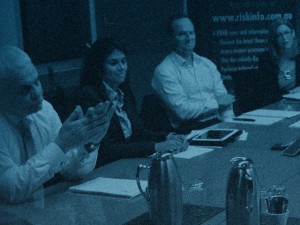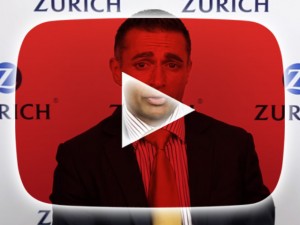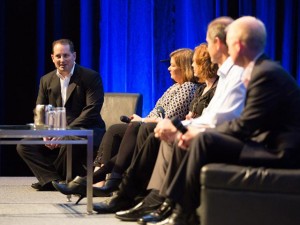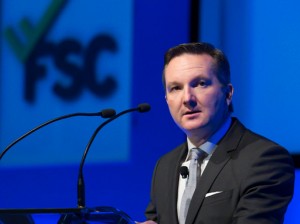Guest contributor, Chris Unwin, envisages some fantastic opportunities unfolding for risk-focused advisers in future. In outlining why he believes these opportunities exist, Chris also shares some of his tips to help advisers maximise the value associated with taking this path, from the point of view of both the adviser and the client…
Our industry is moving unerringly towards holistic financial planning practices (financial services one-stop shops) where a client can have ALL of their financial needs met under the one roof. The client will take comfort from the fact that, whatever their particular financial need may be at any particular time, they will be sitting in front of a ‘specialist’ in that area.
The days of the ‘individual generalist’ are numbered. It is becoming harder and harder to sit in front of an educated client and purport to be an expert in all areas financial – and even if you can, when are you going to have time to see clients with all the training you will have to be doing?
There is no doubt in my mind that the biggest opportunity in these circumstances is to become a high quality, specialist risk adviser. If I was relatively new in this industry (or still had plenty of time to go), I would be honing my skills in the risk advice space in order to separate myself from the pack and become a high quality risk adviser. Then in years to come, when holistic financial planning practices are crying out for quality risk advisers, the world will be your oyster and you will be perfectly positioned to maximise both your earnings potential and the value you deliver to your clients.
There is a multitude of ways in which you can hone your skills as a risk adviser, but I have outlined just three advice strategies below that will set you on your path to becoming a quality risk adviser. Strategies such as these will not only separate you from the pack and add real value to your clients (FYCB – For Your Clients’ Benefit), but they will also add real value to your business (FYOB – For Your Own Benefit).
Strategy One – Intergenerational Advice
Have you ever been guilty of saying, or have you ever heard other advisers say: “Insurance isn’t really relevant for most of my clients as they are mostly pre and post retirees”?
Can you spot the flaw in this statement?
What do you consider to be the single biggest financial risk in most people’s retirement? Investment risk? Market risk? GFC?
NO! The biggest financial risk in most people’s retirement is if serious illness, injury or death strikes a retiree’s child, grandchild or spouse thereof without proper protection being in place. What potential impact will this have on your clients’ retirement nest egg?
Who will be expected to fund the financial shortfall?
Ask you retiree clients whether they would rather fund the potential shortfall themselves, or pay a small premium to a life company so that they can fund the shortfall instead.
Result:
- An appropriate personal protection package for all eligible children, grandchildren and spouses (FYCB).
- You also turn a shrinking business (as most clients are in drawdown phase) into a stable or growing business by bringing wealth accumulators into your client base (FYOB).
Strategy Two – Child Trauma Cover
Some advisers tell me that they don’t bring up child trauma cover with their clients because some parents don’t want to contemplate something happening to their children. This is a cardinal sin. If necessary, I suggest you avoid this discussion by presenting the child trauma benefit as a “fantastic automatic inclusion” on the parent’s policy which is cheap as chips (approx. $100 per annum for $100,000 cover) and an invaluable potential benefit if something were to happen to one of the kids.
The primary potential benefit of child trauma cover is not (as I initially thought) to cover medical expenses (although this could obviously be handy), but to enable the breadwinner to take time off work (unpaid leave), which he/she can then spend with the sick or injured child. Any doctor will tell you that by far, the greatest facilitator of a child’s recovery from a major illness or accident is their ability to spend time with BOTH parents, not just one.
In addition, the child trauma cover is convertible to adult trauma cover from age 18 with no underwriting, the benefit of which will be outlined in Strategy Three below.
It is also worth noting that one personal protection package per week with two children attached to the adult trauma policy results in 100 guaranteed new clients set to come on board each year!
Result:
- Clients (parents) get an invaluable benefit at a minimal cost should something happen to one of their children (FYCB).
- You create a guaranteed new client pipeline simply by doing the right thing by your clients (FYOB).
Strategy Three – P Plater Protection
Did you know that trauma cover is a product that is specifically targeted at the 18-25 age group?
NB all the accident- related ‘Traumas’: paralysis, major head trauma, severe burns, coma and loss of limbs – all of these are the most common injuries sustained in car accidents.
Which group of potential clients have by far the biggest potential exposure to car accidents?
P Platers (especially male).
If they only knew it existed, which parents of P Plater children would NOT buy a form of protection that covered their children for the most common injuries sustained in car accidents – especially if they knew it only costs approx. $250 per annum for $100,000 cover?
As we head towards the Christmas holidays, I believe this is a fantastic time to run a P Plater Protection marketing campaign with your adult clients.
Also, if a child has been on his/her parent’s adult policy as a child trauma life insured, it becomes the easiest and most logical of transitions from child trauma cover to P Plater Protection at age 18.
Result:
- Clients (parents) obtain peace of mind re potential car accident implications at a minimal cost (FYCB).
- You create the opportunity to tap into the virtually untapped 18-25 market with targeted risk advice (FYOB).
The content of this article is a small sample of what is contained in the ‘Miracle of Trauma & Best Interest of Client’ Masterclass that Chris Unwin is conducting around the country. Click here for more information.

Chris Unwin is a financial adviser of 35 years standing and has been a specialist risk adviser for the last 20 years. His training and consulting business has operated for 10 years and it specialises in helping advisers across the full spectrum of experience with their client engagement skills, both in the risk advice specific space as well as in the more generic soft skills space.
Contact or follow the author: Telephone: +61 417 281 034 | Website | Email | LinkedIn

















